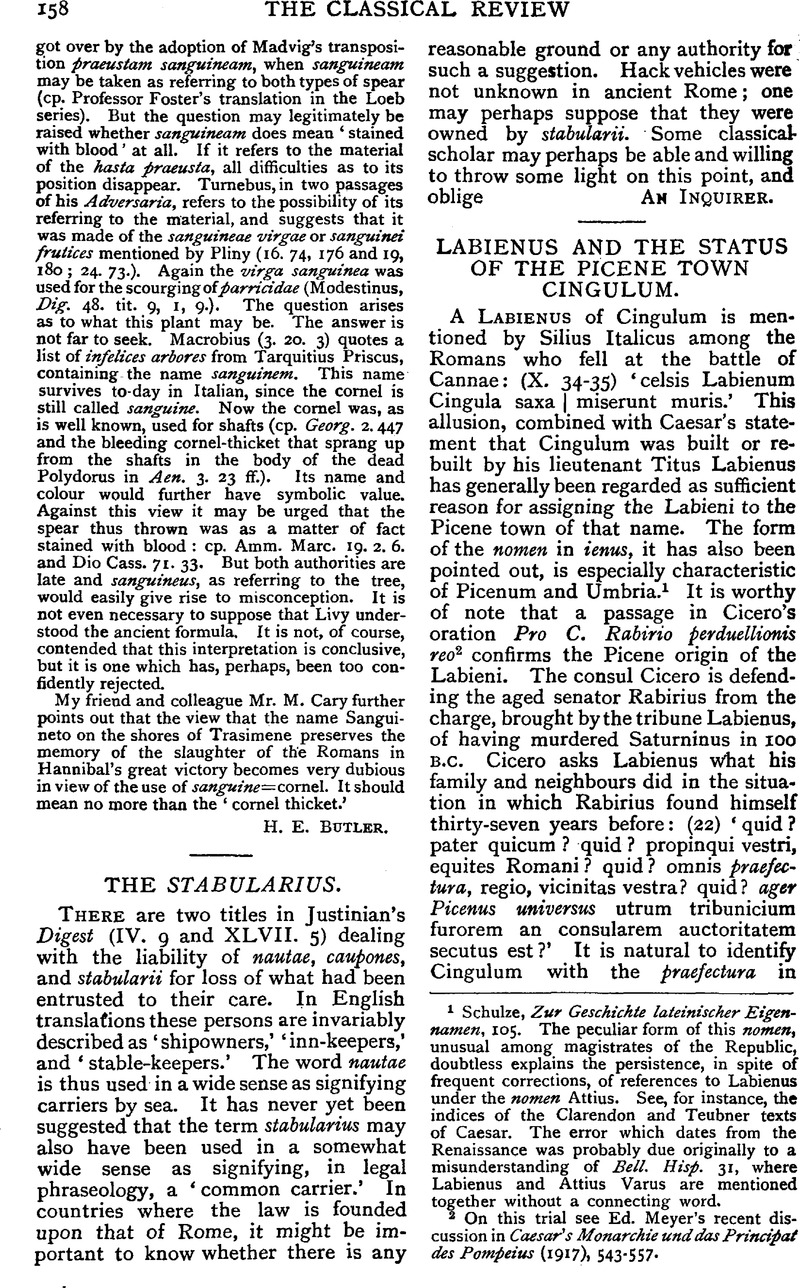Article contents
Labienus and the Status of the Picene Town Cingulum
Published online by Cambridge University Press: 27 October 2009
Abstract

- Type
- Review Article
- Information
- Copyright
- Copyright © The Classical Association 1921
References
page 158 note 1 Schulze, , Zur Geschichte lateinischer Eigennatnen, 105Google Scholar. The peculiar form of this nomen, unusual among magistrates of the Republic, doubtless explains the persistence, in spite of frequent corrections, of references to Labienus under the nomen Attius. See, for instance, the indices of the Clarendon and Teubner texts of Caesar. The error which dates from the Renaissance was probably due originally to a misunderstanding of Bell. Hisp. 31, where Labienus and Attius Varus are mentioned together without a connecting word.
page 158 note 2 On this trial see Ed. Meyer's recent discussion in Caesar's Monarchie und das Principal des Pompeius (1917), 543–557.
page 159 note 1 On the praefecturae in Picenum see Frank, , Klio, 1911, 373–376Google Scholar.
page 159 note 2 Cf. Mommsen, , CIL. IX., p. 541Google Scholar; Huelsen, s.v. Cingulum, Pauly-Wissowa. There is no evidence for Huelsen's statement that Cingulum was founded by Labienus in 63, the year of his tribunate.
page 159 note 3 Cf. Mommsen, , Staatsrecht, III. 797Google Scholar.
- 1
- Cited by




